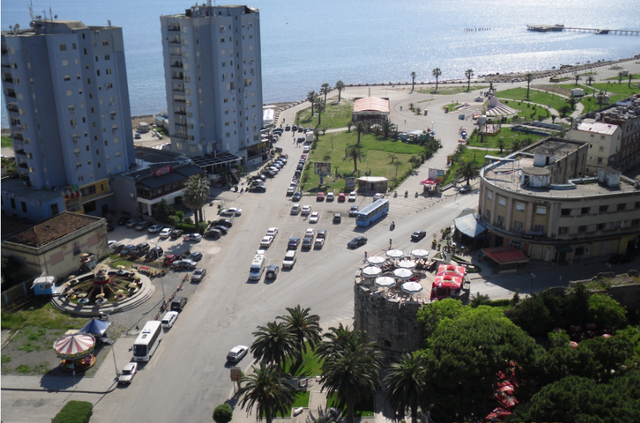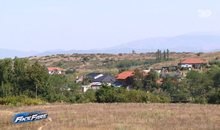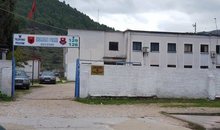
 Flash News
Flash News
Lezha and Durrës with the highest employment rate, Kukësi and Gjirokastra with the lowest

The rapidly declining population as a result of high emigration and rapidly declining fertility is making a strong impact on the labor market.
All sectors of the economy are sounding the alarm about workers, but in some counties the declining population is leading to zero unemployment.
For example, in the two most peripheral regions of the country, in Kukës and Gjirokastër, unemployment is on the verge of extinction, because the population of these regions consists mainly of people of retirement age.
INSTAT data show that in the first quarter of 2022, Durrës and Lezha were the two counties with the highest unemployment rates respectively 16.1% and 22.7% at a time when the average national unemployment rate in this quarter was 11.3%.
On the other hand, Gjirokastra and Kukes had the lowest unemployment rate at around 4%. Low unemployment in the Kukes region comes as a paradox, as according to official data it is the poorest region in the country and over 70% of the economy is dominated by agriculture.
The regions of Kukes and Gjirokastra have been rapidly depopulated by high emigration and inward movements. The World Bank's analysis of employment performance in the Western Balkans has found that the reduction of unemployment in Albania is largely due to high emigration.
The unemployment rate in the first quarter has experienced the highest annual increase in the Dibra region. In this region, the unemployment rate was 14.8%, from 23.6% in the first quarter of 2021.
The largest decrease in unemployment was observed in the district of Vlora with over 8% compared to last year.
Unemployment data in 12 regions show that 5 of them (Lezha, Durres, Vlora, Dibra, Tirana) have the indicator above the national average, while in seven other regions the unemployment indicator is below the national average.
The working age population has been declining rapidly in recent years, and this will lead to lower labor supply. Last year, the working age population fell by 32,000 or 1.6%, the strongest decline in the entire transition period.
Në një studim të fundit mbi potencialet e zhvillimit të sektorit privat në Shqipëri Banka Botërore evidentoi se forca e punës dhe mungesa aftësive janë shndërruar në një pengesë serioze për zgjerimin e biznesit. Sipërmarrjet shqiptare identifikojnë mungesën e punëtorëve të kualifikuar si pengesën e tretë më të madhe me të cilat përballen. Kërkesa për punëtorë me arsim të lartë është rritur gjatë dekadës së fundit dhe është në rritje, por shumë biznese pohuan se kishin vështirësi në gjetjen e punëtorëve me aftësi specifike teknike.
Mungesa e punëtorëve është një pengesë veçanërisht serioze për kompanitë e huaja që duan të investojnë në Shqipëri.
Foreign-owned firms operating in Albania identified finding skilled workers as their second most important challenge. Emigration is likely to further reduce the number and quality of skills of the workforce, weakening Albania's attractiveness as a destination in the labor-intensive sectors.
The World Bank suggests that Albania should move away from foreign investment policies focused on low-cost labor and adopt a new strategy based on utilizing public investment in technical education, attracting efficient FDI, and have higher productivity./Monitor
Latest news


Not only the body, swimming also helps the brain
2025-07-05 21:02:49
"Be careful with the water", Alimehmeti warns about the health risks of summer
2025-07-05 20:39:10
PSG beats Bayern Munich 2-0, advances to Club World Cup semifinals
2025-07-05 20:19:38

Two vehicles collide on the Elbasan-Peqin axis, drivers injured
2025-07-05 19:26:29

What does Zelenskyy have more than Zegjineja?
2025-07-05 18:45:26

Fiscal peace, but at a cost
2025-07-05 18:00:10
'Bankers' tax evasion, Chinese CEO and former director jailed
2025-07-05 17:39:21
Kyle Walker joins English club on two-year deal
2025-07-05 17:20:24
Two cars collide on the Saranda-Delvina axis, 4 injured
2025-07-05 17:05:29
Touching gesture! Liverpool will pay Jota's family's salary until 2027
2025-07-05 16:45:18
The zodiac signs that cheat most often
2025-07-05 16:25:53

"I asked for the dismissals", Dredha tries to soften Rama's 'blow' in Vlora
2025-07-05 15:48:49
Bomb threat in Parliament, prosecutor: It was a lie
2025-07-05 15:22:28

Bardhi: The recount revealed how greedy Zeqine Balluku is in stealing
2025-07-05 14:44:29
Knife wound on the secondary road Tirana-Durrës, perpetrator sought
2025-07-05 14:37:54
Tears and pain, Diogo Jota is escorted to his final home
2025-07-05 14:21:34
Success starts with yourself! Simple ways to invest in personal development
2025-07-05 13:58:50
Unlicensed firearms found in apartment, 50-year-old arrested in Lushnje
2025-07-05 13:43:11

Tirana Court remands Skerdi Sina to prison
2025-07-05 12:59:34
Cocaine laboratory in Greece, here are the Albanians arrested and wanted
2025-07-05 12:40:16
Directed Justice/Vangjeli: SPAK does not investigate any scandal involving Rama
2025-07-05 12:22:03

Bomb alert, Police remove MPs and media from Kosovo Parliament building
2025-07-05 11:48:16
"The will of the people" and the irony of ordered resignations
2025-07-05 11:32:05
Summer drowning risk: How to enjoy the water without risking your life
2025-07-05 11:20:27
Fire situation in the country, 16 fires reported in 24 hours, 4 still active
2025-07-05 11:07:04
Car hits pedestrian at white lines, injured in serious condition in Vlora
2025-07-05 10:59:58
Mosquito-borne diseases are a growing problem in Europe
2025-07-05 10:44:13



One of Sweden's most dangerous and wanted criminals arrested in Turkey
2025-07-05 09:38:29
Foreign exchange/ How much foreign currencies are bought and sold today
2025-07-05 09:18:38

"Don't be influenced by the opinions of others", today's horoscope
2025-07-05 08:40:50

Morning Post/ In 2 lines: What mattered yesterday in Albania
2025-07-05 08:02:07

Trump says he's ready to raise tariffs to 70% on some countries
2025-07-04 22:35:52
Tre shenjat e zodiakut që do ‘pasurohen’ në Korrik
2025-07-04 22:05:09
Gaza War: Hamas Accepts US Proposal for 60-Day Ceasefire
2025-07-04 21:50:10
Autocracy in Albania, Fuga: Governance has gotten out of control
2025-07-04 21:40:51
Meta: Agriculture on credit, the new fraud!
2025-07-04 21:26:39




Vote recount in Durrës ends without changes
2025-07-04 20:12:54
Gas station explodes in Rome, 25 injured (VIDEO)
2025-07-04 20:00:20

These afternoon habits often sabotage weight loss
2025-07-04 19:39:28
Former Arsenal player Thomas Partey accused of rape
2025-07-04 19:24:21
Shepherd disappears without a trace in Delvina
2025-07-04 19:14:31

Bardho gave Zegjine's mandate/Braho: Unfair! It violates the electoral system
2025-07-04 19:01:08


Rapid developments in the Sultanates!
2025-07-04 18:00:06



Italy tightens rules for skateboard traffic
2025-07-04 17:20:18

Unusual for the time, dense fog covers the coast of Vlora
2025-07-04 16:48:01


Accident on the Shkodra-Lezhë axis, one dead and 3 injured
2025-07-04 16:14:19
Albania with fewer requests for asylum and Albanian citizenship in 2024
2025-07-04 16:06:57

Albania last for quality of life, DP: Technical government is the solution!
2025-07-04 15:42:30
Nico Williams says "No" to Barcelona, signs with Athletic Club until 2035
2025-07-04 15:33:35
Fires in the country, four fires are still active, what is the situation?
2025-07-04 15:24:20

Summer brings big changes for these 4 zodiac signs
2025-07-04 15:00:04
Osmani: MPs need to agree to a secret ballot for the Speaker of Parliament
2025-07-04 14:51:09
Serious accident on the Peqin-Elbasan axis, two injured
2025-07-04 14:37:56

GJKKO leaves in force the security measure for the head of the KPP
2025-07-04 13:58:17
Who will replace Ilir Meta and take over the leadership of the PL?
2025-07-04 13:50:36
Berisha: Dismissal of directors in Vlora, another act of 'scapegoats'
2025-07-04 13:41:46




Librazhd/ In a serious psychological state, the young man consumes pesticides
2025-07-04 13:05:07


Weapons trafficked from Kosovo to Albania, two arrested, 8 pistols seized
2025-07-04 12:33:28
Konsumimi i tepërt i çokollatës, ja cilat janë dëmet që shkakton në organizëm
2025-07-04 12:23:35

Fires in the country, 21 fires in the last 24 hours, 4 still active
2025-07-04 12:00:19
WB calls for debt transparency: Albania to publish details of every loan
2025-07-04 11:50:05
